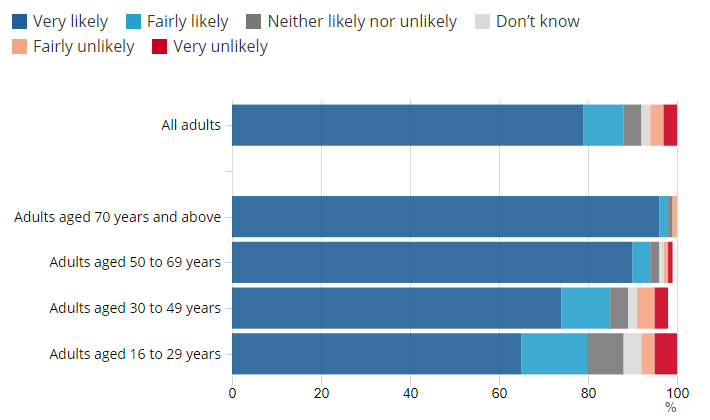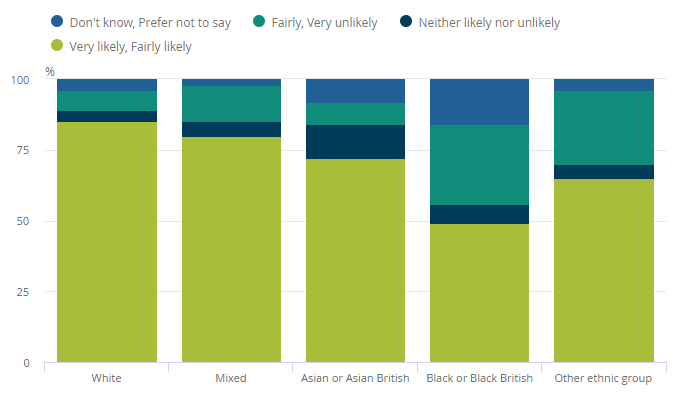Covid-19 vaccinations will kick off within days but it seems some people need a sharp dose of facts first. In an article published in the Daily Mirror, Matt Roper and I debunk some of the common myths and misconceptions about vaccines.
Scepticism about vaccines has been growing throughout the pandemic and a recent survey found that one in five British adults may refuse to take a coronavirus jab – even though it is probably our only hope of a return to normality.
- MYTH: A vaccine produced so quickly can’t be safe
Most vaccines take years to develop, test and approve for public use but, says Dr Majeed, a global effort has meant scientists have been able to work at record speed.
He says: “Covid-19 vaccines have to go through the same process of approval as other vaccines. Funding was made available immediately and studies set up rapidly.
“There have been a lot of technological developments that allow vaccines to be developed much more quickly.”
- MYTH: I might be allergic but won’t know until I get it
Azeem Majeed is professor of primary care and public health at Imperial College London
“Allergies to vaccines are very rare,” says Dr Majeed. “They are given safely to millions of people every year.”
The odds you’ll have a severe reaction to a vaccine is about one in 760,000.
Being struck by lightning next year is higher at one in 700,000.
Most reactions are because of some other component of the vaccine, such as egg protein, if the person is severely allergic.
3, MYTH: There haven’t been enough tests for people with underlying conditions
Dr Majeed says: “There are many vaccine trials taking place and they are being tested in people with different characteristics, such as age, sex, ethnicity and medical history.
“Results show they are safe in all groups they have been tested in.”
- MYTH: Vaccines can overload your immune system
In 2018 the myth was debunked by American researchers who examined the medical records of more than 900 infants from six hospitals.
They found no link between vaccines given before the age of two and other infections in the following years.
“Vaccines do not overload your immune system,” says Dr Majeed. “On the contrary, they generate an immune response that helps reduce the risk of infection, complications and death.”
- MYTH: The vaccine could actually give me coronavirus
Some vaccines contain the germs that cause the disease they are immunising against but they have been killed or weakened to the point they don’t make you sick.
In the case of a coronavirus vaccine, “none that are in development contain a live coronavirus,” assures Dr Majeed, “and they therefore can’t give you a coronavirus infection”.
- MYTH: If everyone around me is immune, I don’t need a vaccine
“It’s essential to achieve a high vaccine coverage so we create herd immunity,” says Dr Majeed. “If people refuse to be immunised, we will continue to get outbreaks of Covid-19.
“If you decline to be immunised, you may get infected and also infect the people you come into contact with.”
- MYTH: It’s better to be immunised by catching Covid
Dr Majeed says: “Vaccines have been shown to be very safe, whereas illnesses such as measles and Covid-19 can lead to serious long-term medical complications.
“Vaccines have saved many lives and prevented people from being left disabled.”
- MYTH: Vaccinated children experience more allergic, autoimmune and respiratory diseases
This is another unfounded claim that has led some parents to delay or withhold vaccinations, says Dr Majeed.
Studies examining many vaccines have failed to find a link with allergies or autoimmune disease.
“Vaccines protect against many diseases and substantially reduce the risk of illness and death in children,” he says.
- MYTH: Some of those taking part in trials died
Stories that Dr Elisa Granato, one of the first participants in the human trials of the Oxford vaccine, died shortly after being injected, were shared millions of times.
The news was false and she gave a BBC interview saying she was feeling “absolutely fine”.
“Only one death has been reported among people taking part in trials,” says Dr Majeed.
João Pedro Feitosa, a doctor in Brazil, was given the placebo rather than the vaccine and died of Covid-related complications.
- MYTH: The swine flu vaccine left people with side effects, so why would this one be safe?
A mass vaccination programme against swine flu in the US in 1976 led to increased chances of people developing Guillain-Barre syndrome, a rare neurological disorder.
Dr Majeed says: “Covid-19 vaccines have been carefully tested in a large number of volunteers and found to be very safe.
“Once they are more widely used, there will be monitoring of people who have received the vaccines to identify any future problems.”
- MYTH: Vaccines cause autism
The idea that vaccines cause autism has long been disproved but the claims have recently been doing the rounds again.
Last year a massive study from Denmark found no association between being vaccinated against measles, mumps and rubella, and developing autism.
It is the latest of at least 12 other studies that have tried and failed to find a link.
Dr Majeed says: “No evidence has ever been found that vaccines cause autism in children.”
- MYTH: The Spanish Flu vaccine led to 50 million deaths
During the 1918 pandemic it was the fact there was no vaccine that caused it to infect a third of the world’s population.
In the 1930s scientists found it was caused by a virus, with the first vaccine developed a decade later.
Read Covid-19 vaccination – separating fact from fiction in full

